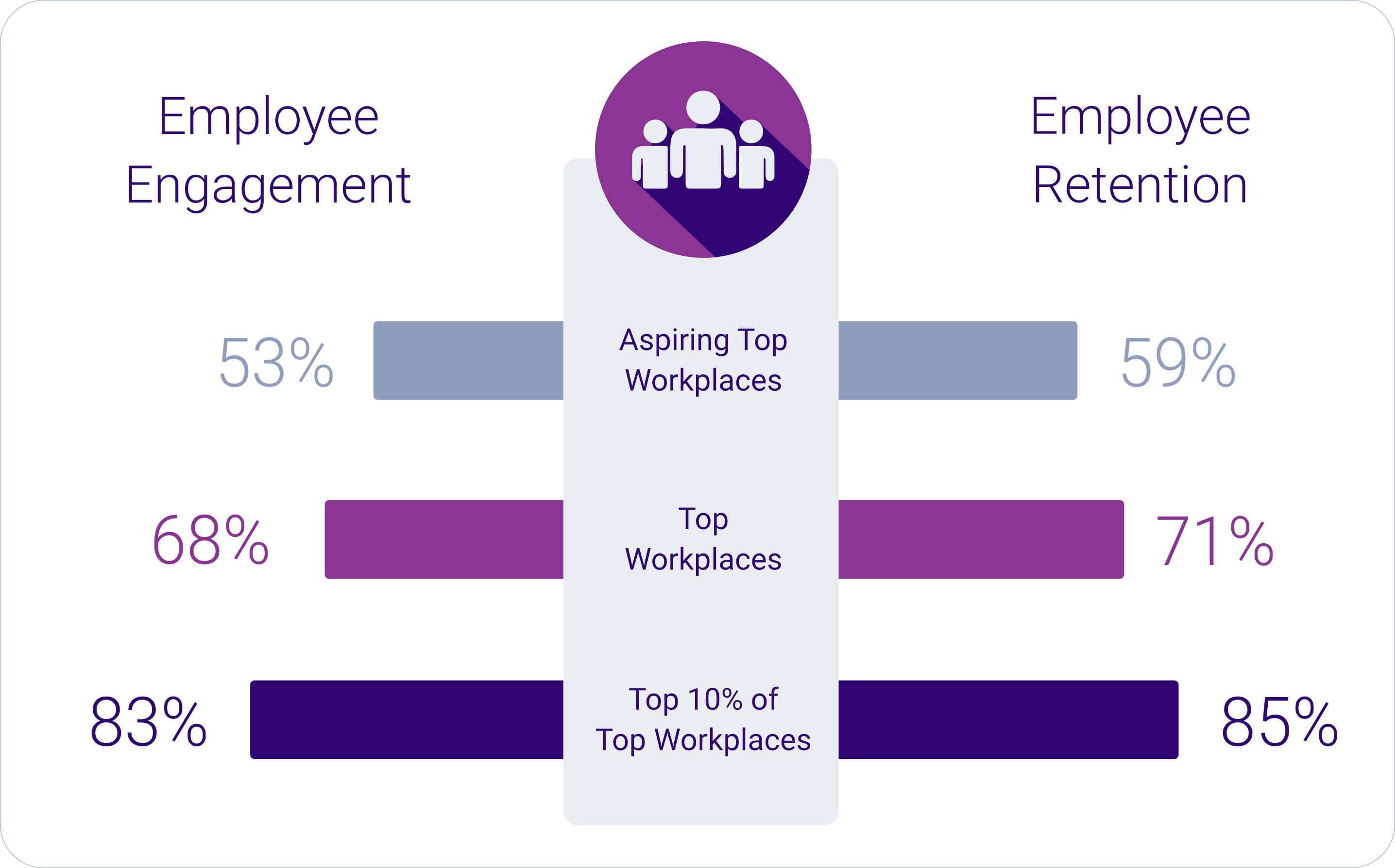The Great Resignation. The Turnover Tsunami. There’s a lot of buzz about employee turnover right now, as well as the hiring challenges that will result. With all of this attention on talent, companies are focused on how to improve the recruitment process. But it’s equally critical to think about what you could – and should – be doing to avoid unwanted employee breakups in the first place.
Let’s look at what’s driving your best talent to leave for new opportunities and then talk about five best practices for improving employee retention.
They’re “just not that into you”
What could be causing employees to leave? Energage research points to one of the underlying causes. Since the start of the year, we’ve seen a steady drop in employee engagement. In fact, survey data collected from employees at more than 4,000 companies suggest that engagement levels have fallen to a level lower than any time during the pandemic.
In April 2020, data indicates employee engagement increased as companies scrambled to ensure employee health and well-being during the pandemic. Following this initial spike, engagement levels dropped mid-year before inching up at the end of 2020. But the new year started with a one-point decline in engagement – and has continued to decline ever since. Through survey feedback, we know employees are rethinking their commitment to their employers.
Workplace Survey Statement:
“I have considered searching for a better job in the past month.”
Our research shows lower levels of loyalty as employees leave their employer for what they believe will be a better opportunity. It’s an indication that employees aren’t that into their employers right now.
Some employee relationships are rockier than others
While overall engagement levels have been declining, new Energage research shows that some industries have rockier relationships with employees than others. Education, Hospitality, Utilities and Telecommunications, Services, and Manufacturing indicated more significant decreases in employee engagement in 2021. Compared to the second quarter of 2020, our studies show a drop of six points or more.
Employee burnout and stress have been significant factors over the last year. Employees in these industries have been especially hard hit. Hiring freezes and layoffs have been hard to reverse at many companies, leading to more work for fewer employees. And in other situations, burnout is high because remote work has made employees feel they’re always on the clock.
In addition to seeing waning loyalty in the survey feedback, many employees in these industries also note they are less willing to recommend their company to others as a great place to work.
“Employees are at the point where they can reflect on their company’s response to COVID-19 and are judging those actions in hindsight. The worst of the pandemic may be behind us. But the actions taken by employers have left some employees questioning their loyalty and also their career choice.” Doug Claffey, Energage Founder & Chief Strategy Officer
This data, coupled with the dramatic decreases in intent to stay, signifies that the strong positive regard for the employer that existed during the pandemic response is evaporating. Yet, despite these challenges, focusing on the past won’t likely be helpful.
“Organizations should resist the urge to overanalyze declines in employee engagement and instead focus on improvement going forward,” said Claffey. Many challenges and opportunities will impact future engagement, including how to run a hybrid workforce, keep employees safe, and balance new work/life flexibility issues.”
Learn more: How to Prevent Burnout in the Workplace
Learn more: How Employers Can Prevent Burnout in Remote Employees
Five employee retention best practices
- Prioritize your employee retention best practices and make sure you’ve got support from senior leadership.
- Determine why employees choose to stay. Use a reliable, third-party employee engagement survey to give employees a voice. And then listen to them. Really listen.
- Know what really matters to employees. Listen to the feedback employees offer through the engagement survey. Use those insights to identify what’s going well and encourage those things. Uncover where there’s room for improvement and then go after it.
- Turn survey insights into action. If you aren’t sure what the survey data says, enlist the help of an expert who can present high-leverage recommendations to senior leadership.
- Review and repeat. Consider using pulse surveys for more frequent check-ins. Remember, employee engagement is a journey, not a destination.
Engaged employees want to stay in the relationship
Top Workplaces take these steps to boost employee engagement and minimize unwanted turnover. And the results show. First, these award-winning companies achieve engagement levels double the U.S. average – and some even higher. And as you can see, a people-first culture pays dividends for these companies in terms of employee commitment:

The takeaway? Employees at Top Workplaces feel heard, appreciated, and connected. In turn, they give their very best every day, they’re willing to recommend it to others – and they’re also committed to staying put.
Find out what matters most to your employees. Nominate your company for Top Workplaces, the recognition program that’s powered entirely by employee feedback.

